When temperature is increased, the energy of the electron increases. Hence more electrons are available in the conduction band. When the band gap is in the range of 1 electron volt it is called a semiconductor. When the band gap is more than 3 electron volt, it is an insulator. The semiconductors can be further classified as direct band gap and indirect band gap semiconductors. However the details of those classifications are beyond the scope of this book. When the semiconductor is in the pure form, it is called intrinsic semiconductor. When other materials such as phosphorous and boron are added, this is called doped semiconductor and it’s also called as extrinsic semiconductor.
When phosphorous is added, it is called N or negative type and when boron is added it’s called P or positive type. As an example, when phosphorous is added, it has more number of electrons than silicon and it also have more number of protons than silicon. Totally the crystal after adding phosphorous will be neutral. However in the electronic structure new allowed energy level appears. This is shown in the band structure. Notice that the N doped band structure has valance electrons just below the conduction band. Now those electrons need very little energy to move to the conduction band. At room temperature we can say that all the electrons coming from the phosphorous doping are available for conduction.
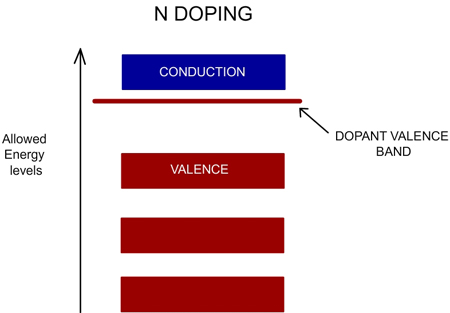
Fig 5.8 Schematic of the energy levels in a N-doped semiconductor
Similarly if instead of phosphorous, the silicon is doped with boron, it will have lesser number of proton and lesser number of electrons than pure crystalline silicon. Now the energy band structure changes as shown below. Notice that here an empty level appears, but the empty level appears close to the valance band or the filled electron band. Now the electron can go from the valance band to the conducting level which is the empty level. This enables electrical conduction.
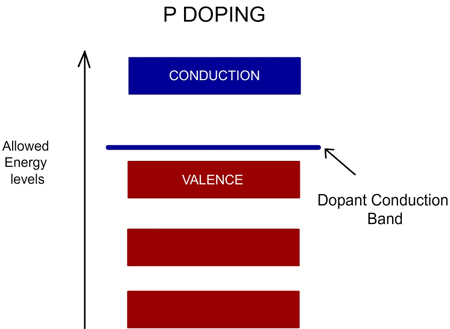
Fig 5.9 Schematic of the energy levels in a P-doped semiconductor
In the beginning, we saw that the phosphorous and boron are not good electrical conductors. Silicon is a semiconductor, but by adding boron or phosphorous which are actually insulators we can increase the conductivity of silicon. These can be explained only based on our understanding of the energy levels gained through quantum physics. In the extrinsic semiconductors the amount of free electrons available is not the same as the amount of holes available. Similarly for the N doped silicon, the number of electrons is high. For the P doped silicon, the number of holes is high. In normal electronic devices both N type and P type doping are used in the same material. When the concentration of N is the same as the concentration of P, a junction is formed. Usually intrinsic semiconductors are not used for chip manufacturing. During the manufacturing of the silicon wafer itself, it will be doped with boron; the wafers available are usually P type wafers.
Further doping is done to change the doping amount and the type of dopant. More phosphorous can be added to make it N type. More boron can be added to make it further higher concentration P type. A small section of the periodic table is given below. This enables one to understand what type of material will lead to what type of doping.
Diode: Next we will see how the operation of a diode can be understood. When a part of the silicon is N type and another part is P type, then electricity will flow in only one way. This is called forward biasing.

Fig 5.10 Schematic of a diode under forward bias
If the polarities are changed as shown in the figure. Then it is called reverse biasing, current will not flow.

Fig 5.11 Schematic of a diode under reverse bias
Instead if only N type material is present then the current will flow in both directions regardless of polarity. Similarly only P type material is present for those connections, then current will flow for both types of connections.
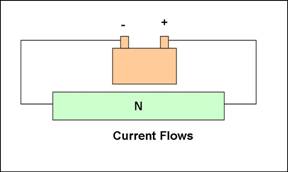 
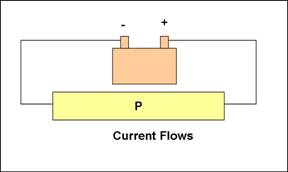 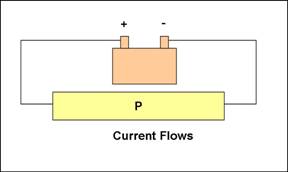
Fig 5.12 Schematic of a semiconductor with different connections
This has to be kept in mind to understand the operation of a transistor. The transistors which are commonly used in the digital circuits today are called MOSFET transistor.
|